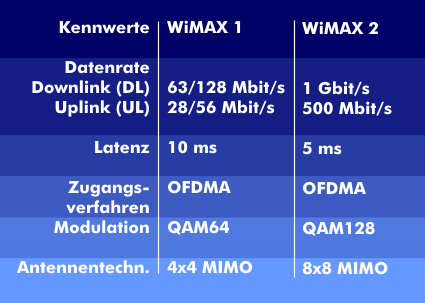IEEE 802.16m
The 802.16m, Advanced Air Interface working group, which became active in 2007, is concerned with defining a high-speed radio standard with transmission rates of up to 1 Gbit/s in mobile operation with slow-moving subscribers. This mode of operation is called Nomadic or High Efficiency/Strong Signal Mode.
In High Mobility Mode at a driving speed of 250 km/h, the data rate for the mobile terminals should still be 100 Mbit/s. 1 Gbit/s should be possible at low movement speeds. Other requirements include the size of the radio cell, which is to have a diameter of 30 km, an all- IP concept, Orthogonal Frequency Division Multiplex( OFDM) as the access method and Multiple Input Multiple Output( MIMO) as the multi- antenna concept. Furthermore, the common bit density is to be increased from 1:5 to 1:8.
802.16m is compatible with 802.16e and uses flexible bandwidths of 5 MHz, 7 MHz, 8.75 MHz, 10 MHz and 20 MHz. Technically, 802.16m is implemented in WiMAX Release 2 or WiMAX 2.

